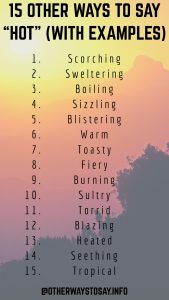“That’s good to hear” is a phrase many of us use without even thinking, whenever we get positive news from someone. But sometimes, it feels flat, overused, or doesn’t quite match the tone or depth of what’s being shared. What if there were better, more tailored ways to respond. 15 other ways to say thats good to hear ones that strengthen connection, sound more genuine, and adapt to different contexts? That’s exactly what we’re going to explore in this article. 15 other ways to say thats good to hear
By the end, you’ll have a rich toolkit of alternative phrases, tips for choosing the right one in context, and guidance on avoiding common pitfalls. You’ll be able to respond in a way that feels more thoughtful, expressive, and appropriate — without sounding forced.

Why “That’s Good to Hear” Isn’t Always Enough
The role of phatic expressions in conversation
Before diving into alternatives, it helps to understand what “That’s good to hear” really does. In linguistics, “phatic expressions” are utterances whose primary function is social — to maintain connection rather than exchange information. “How are you?” or “Nice weather today” are classic examples. Likewise, “That’s good to hear” serves to show you’re listening and to provide a positive reaction, even though the content of what was said carries the real meaning. 15 other ways to say thats good to hear
Because phatic expressions are simple and functional, they tend to get overused and lose emotional weight over time. When someone shares something meaningful 15 other ways to say thats good to hear a tough health update, a long-awaited success, or personal news — replying with a standard phrase might unintentionally feel perfunctory.
Here’s a clear, detailed outline you can use for your article on “ways to say that’s good to hear.” It’s structured to keep the piece informative, 15 other ways to say thats good to hear natural, and engaging while covering all subtopics in depth.
Outline: 15 Other Ways to Say “That’s Good to Hear”
1. Introduction
- Start by explaining what “That’s good to hear” means and why it’s such a common response.
- Mention that while it’s polite and positive, it can sound repetitive or generic if used too often.
- Briefly introduce the goal: exploring more natural, friendly, or professional alternatives depending on context.
2. Why People Say “That’s Good to Hear”
- Explain the emotional purpose: acknowledgment, encouragement, empathy, or shared happiness.
- Mention tone and setting—how it’s used in casual, professional, or personal conversations.
- Show an example:
- Friend: “I finally got the job!”
- You: “That’s good to hear!”
What you lose with “That’s good to hear”
- Emotional depth: It often doesn’t capture all the feeling behind what was shared.
- Clarity: It can be ambiguous — is it mild approval, relief, or excitement?
- Engagement: It doesn’t always encourage more conversation or invite sharing.
So, the point isn’t to ban “That’s good to hear,” but to know when it’s enough — and when a richer alternative can add value. 15 other ways to say thats good to hear
The Many Flavors of “Good to Hear” — and When to Use Them
When someone tells you something positive, your response can do more than acknowledge — it can reflect your relationship with them, the weight of their news, and encourage further connection. Here’s how you can think about the tone you want to strike:
| Tone / Intensity | Purpose | Example Alternatives |
|---|---|---|
| Warm & approvi ng | You want sincerity without overstatement | “That’s wonderful to hear,” “I’m really happy for you,” “So glad to hear that” |
| Supportive & reassuring | For news that involves worry or risk | “That’s a real relief,” “I’m relieved to hear that,” “So glad things turned out well” |
| Excited / celebratory | When the news is big, good, or milestone-based | “That’s fantastic news,” “I’m thrilled to hear that,” “That’s incredible!” |
| Polite & formal | In professional or less familiar relationships | “I’m pleased to hear that,” “That’s encouraging,” “That’s excellent to hear” |
| Casual / familiar | Among friends, peers, or casual contexts | “Awesome,” “Great to hear,” “That makes me happy,” “Music to my ears” |
60+ Alternative Phrases You Can Use Instead of “That’s Good to Hear”
Here are more than sixty alternatives, grouped roughly by tone. 15 other ways to say thats good to hear As you practice, you’ll start instinctively picking ones that suit the moment best.
Warm / Positive / Genuine
- That’s wonderful to hear
- I’m so glad to hear that
- That’s great news
- That’s fantastic
- I’m really happy for you
- I’m delighted
- That’s absolutely amazing
- What a relief
- Good stuff
- That’s encouraging
Emotional / Stronger Expressions
-
I’m thrilled to hear that
-
That’s incredible
-
I’m ecstatic for you
-
I’m over the moon
-
That’s music to my ears
-
I can’t tell you how happy that makes me
-
That’s a big win
-
That’s truly inspiring
-
That news made my day
-
I’m so excited for you
Reassuring / Comforting
-
That’s such a relief
-
Thank goodness
-
I’m relieved to hear it
-
That’s a blessing
-
I’m so pleased
-
That gives me hope
-
That’s encouraging news
-
Good to know
-
That’s reassuring
-
That’s uplifting
Professional / Polite
-
I’m pleased to hear that
-
That’s excellent news
-
That’s very positive
-
That’s gratifying to hear
-
That’s promising
-
That’s quite encouraging
-
That’s a welcome update
-
That reflects well
-
That’s satisfying
-
That’s commendable
Casual / Friendly
-
Great to hear
-
Awesome
-
That’s cool
-
That makes me happy
-
Yay, that’s good
-
Love to hear that
-
Nice
-
Solid news
-
That rocks
-
That hits the spot
Engaging / Conversation-Starter Types
-
That’s good to hear — tell me more
-
Wow, that’s great — what’s next?
-
Really? That’s great news
-
That’s fantastic — how did it happen?
-
That’s so good — what are you thinking now?
-
That’s huge — I’m excited for you
-
That’s great — did you expect that?
-
That’s wonderful — what’s the plan?
-
That’s good to hear — I was worried
-
That’s great — that must be a relief
(You could mix and match parts, or reshape them to fit your style.)
Many of these appear in lists of “other ways to say happy to hear that” or “alternatives to ‘happy to hear that’.” 15 other ways to say thats good to hear

When and How to Choose the Right Phrase (How-to Steps)
It’s not about memorizing every phrase above. Instead, you can follow a few steps to pick (or craft) a good response in context. 15 other ways to say thats good to hear
Step 1: Judge the emotional weight
- Was the news about something small (e.g. “I got a seat in that class”)?
- Or was it about a big change (e.g. “The surgery went well”)?
If the latter, choose stronger or more emotionally resonant expressions. 15 other ways to say thats good to hear
Step 2: Consider your relationship
- With close friends, family, even clients you know well — you can use warmer, more expressive responses.
- With new acquaintances or in formal settings — choose polite, moderate variants. 15 other ways to say thats good to hear
Step 3: Reflect the underlying emotion
- If the news included relief, use words like “relief.”
- If it’s celebratory, reflect that excitement.
-
If it’s gradual progress, “encouraging” or “promising” might be more apt.
Step 4: Optionally, add a follow-up (if you want to deepen the conversation)
Instead of ending with just the response, consider: 15 other ways to say thats good to hear
- “Tell me more.”
- “How did that come about?”
- “What’s your next step?”
- “I’m curious to know more.”
This helps move the conversation forward, showing genuine interest. 15 other ways to say thats good to hear
Step 5: Match tone with medium
- Spoken conversations: you can use shorter, lively phrases (“That’s great!”) and add pauses or tone.
- Email / written messages: you have more room to add nuance (“I’m so glad to hear that — it means a lot. Tell me more when you can.”)
Real-Life Examples and Contexts
Let’s see how this works in different scenarios. Below are sample dialogues and how you might respond with more nuance than “That’s good to hear.”
Scenario 1: Health update
Friend: “I just got back from the doctor — they say everything is normal and healthy.”
You (plain): “That’s good to hear.”
You (better): “That’s a big relief. I’m so glad the results came back well. How are you feeling about it?”
Scenario 2: Work / Professional update
Colleague: “The client approved the proposal we submitted.”
You (plain): “That’s good to hear.”
You (better): “That’s excellent news. I’m pleased it resonated. 15 other ways to say thats good to hear Should we schedule a meeting to talk next steps?”
Scenario 3: Personal achievement
Friend: “I passed the certification exam after months of studying.”
You (plain): “That’s good to hear.”
You (better): “That’s fantastic! I’m thrilled for you — all your effort paid off. What are you planning next?”
Scenario 4: Improvement after worry
Sibling: “My anxiety has been much lower lately — therapy is helping.” 15 other ways to say thats good to hear
You (plain): “That’s good to hear.”
You (better): “That’s truly a relief. I’m so happy you’re seeing progress. Keep me posted — I’m here for you.”
Scenario 5: Mild positive news
Acquaintance: “Looks like the weather tomorrow will be nice for our outing.”
You (plain): “That’s good to hear.”
You (better): “Oh, that’s great — makes things easier. What time should we plan for?”
Common Mistakes to Avoid
When trying to vary your responses, you can slip into patterns that feel unnatural or forced. Here are things to watch out for:
- Overdoing it / being hyperbolic
Saying “I’m ecstatic, over the moon, blown away” for a minor update can seem insincere. - Vague flattery
Using phrases just to fill space (“That’s wonderful news!”) without any follow-up can feel hollow. - Inappropriate tone mismatch
Responding with high excitement to mild or serious news (e.g. “That’s fantastic!” when someone is recovering) can miss the emotional tone. - Using overly formal phrasing in casual settings, or vice versa
“I’m exceedingly pleased” in a casual chat sounds awkward; “Awesome” in a formal email might undermine professionalism. - Neglecting to continue the conversation
Stopping at a basic acknowledgment may close the door. Without follow-up, the exchange can feel cut off. - Using complex or archaic words
Stick to language that feels natural and conversational to you. 15 other ways to say thats good to hear
Tips & Comparisons: Which Alternatives Work Better — and Why
- “That’s wonderful to hear” vs. “That’s excellent to hear”
“Wonderful” often carries a warmer, more personal tone; “excellent” is slightly more formal and neutral. - “I’m thrilled to hear that” vs. “That’s fantastic news”
Use “thrilled” when you personally feel the excitement; use “fantastic news” when you’re acknowledging a big event. - “That’s a real relief” vs. “Thank goodness”
Both suit situations where there’s been worry or uncertainty; “real relief” is more measured, “thank goodness” more exclamatory. - “That’s encouraging” vs. “That’s promising”
Good for progress or gradual improvement. “Encouraging” suggests motivation; “promising” suggests potential. - “That’s music to my ears”
Slightly playful and informal, often used when the news is exactly what you hoped to hear.
Over time, you’ll get a feel for which phrase “fits” a given moment best.
Challenges, Misconceptions, and When “That’s Good to Hear” Is Just Fine
Misconception: You must always use a richer phrase
Not true. For quick updates, casual chats, or when the tone doesn’t call for emotional weight, “That’s good to hear” is perfectly acceptable. The goal isn’t to eliminate it, but to expand your expressive range.
Challenge: Overthinking your response
Sometimes the best response is the one that feels natural. 15 other ways to say thats good to hear If you overthink or force a phrase that doesn’t feel you, it rings hollow.
Challenge: Cultural differences and tone
In different languages or cultural contexts, expressions of emotion vary. What feels warm in one culture may seem over the top in another. Always be sensitive to how expressive might come across. Also, in some communities or cultures, modesty and understatement are valued over exuberance.
When “That’s good to hear” is still a solid choice
- When you want to remain neutral or low-key
- In very formal settings where emotional statements might seem out of place
- In brief or passing conversations
- As a baseline response when you don’t yet know the full context
Trends & Insights in Communication
- Variety improves engagement
Like any repeated phrase, 15 other ways to say thats good to hear “That’s good to hear” becomes background noise. Listeners and readers respond better when language shifts and feels fresh. - Digital communication demands nuance
In emails, texts, chat, tone is harder to convey. A more precise or expressive phrase can reduce misunderstandings. - Emotional authenticity matters more now
People are more attuned to whether someone’s words match their tone. Expressing empathy or joy sincerely builds trust. - Conversational style is rising over stiff formality
In professional settings, many people prefer language that’s friendly yet respectful. Balancing warmth and clarity is key. 15 other ways to say thats good to hear
FAQs — Common & Niche Questions
- Q. Is “I’m glad to hear that” too informal or unprofessional in emails?
No, it’s widely used and acceptable in many settings. That said, if you want something slightly more formal, “I’m pleased to hear that” or “That’s excellent news” can work better. - Q. Can I just respond with “Great!” or “Awesome!”?
Yes — in casual conversations or with close contacts, a short strong word works fine. Just be mindful if the news is serious or sensitive; 15 other ways to say thats good to hear sometimes that brevity could come across as dismissive. 15 other ways to say thats good to hear - Q. When the other person is worried or anxious, how do I respond?
Use reassuring and empathetic phrases: “That’s a relief,” “I’m so glad that turned out well,” “Good to hear — I was concerned.” Then, asking a follow-up (“How are you feeling now?”) shows you care. - Q. What about non-native English speakers — what’s safer?
Start with simple variations like “That’s great to hear,” “I’m happy for you,” or “I’m pleased to hear that.” As you grow more confident, you can add more expressive phrases. 15 other ways to say thats good to hear - Q. Can I mix compliments or comments into the response?
Yes — for example: “That’s fantastic — you really earned that.” Or “That’s great to hear; I know how hard you’ve been working.” Just avoid turning the response into a long speech unless appropriate. - Q. Is there a wrong way to respond?
Yes — saying something tone-deaf or insensitive can backfire. E.g., “Cool” in response to a serious health update would feel flat. 15 other ways to say thats good to hear Or overdoing enthusiasm for small news might seem insincere.

Closing Thoughts & Next Steps
Responding well to positive news is more than just filling space. 15 other ways to say thats good to hear It’s a chance to connect, to reflect empathy or excitement, and to encourage further sharing.
The next time someone shares something good, pause for a moment. Think: what’s the emotion behind it? What kind of connection do I want to show? Then choose (or adapt) a phrase from your growing toolbox — and follow with a question or comment to keep the conversation alive. 15 other ways to say thats good to hear